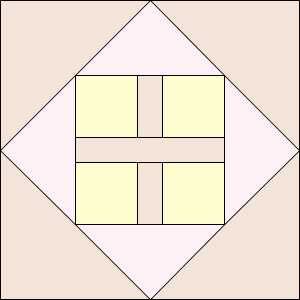Wool Print by Sonia DeLaunay
1977
The trend advocating minimal ornament such as circles and squares was pushed even further by architects advocating Minimalism as a philosophy as well as a design principle.
In 1908 Adolf Loos published a diatribe called Ornament and Crime.
Loos's tombstone.
His dates (missing due to the idea that they are unnecessary ornament, I guess) are
1870-1933
He despised any decorative detail and likened ornament to disease and degeneration, among other negative images, as well as "unmodernism," which caused "enormous damage and devastation ...in aesthetic development."
You can read Loos's essay here at the George Washington University Website
Loos's ideas influenced Germany's Bauhaus School theories on architecture and design, trends that became known as International Style. When Hitler came to power in 1933 many Bauhaus faculty and former Loos students fled to the U.S. Several became influential teachers at American schools, creating a generation of designers who agreed with Loos (although the rhetoric was toned down.)
Bauhaus glass box
Bauhaus minimalism was not the first imported wave of modernism, but because we imported the designers themselves, their principles strongly affected our architecture and interiors.
Miller House by Richard Neutra, a pupil of Loos,
Palm Springs.
Within 20 years of their arrival the ideal building was an unadorned box....
Furnished with chairs of pared-down line
upholstered in fabrics of the most minimal design.
Chair by Charles Eames and Eero Saarinen
1941
Textured cloth was acceptable ornament.
You can still buy a Saarinen Womb Chair
in any of dozens of minimal textured fabrics.
No prints.
This contemporary grass cloth is probably too busy.
Pattern designers would be out of business if everyone listened to Loos..
But people love pattern---so prints were designed as a response to the
trend for texture.
Fake textures
These are feedsack prints,
terribly up-to-date
in the era of International Style.
Here's a textured seersucker with added printed texture.
But don't tell Adolf Loos. He would come unglued.
Although he MIGHT approve of quilting as texture.
Very modern. Very International Style.
"New York" quilt from Haptic Lab.
Quilting from Canoe Ridge Creations
The quilted wholecloth quilt, as in this example
from Crate & Barrel, may be the essence of minimalism.
See another post about Loos here:
http://barbarabrackman.blogspot.com/2010/09/modernism-and-ornament.html
































































